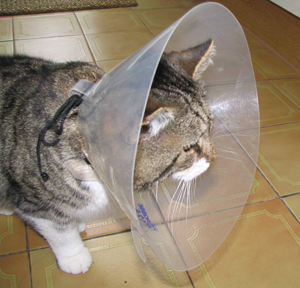Moggy or moggie (plural moggies) is a British affectionate term for a domestic cat, but is also used as alternative name for a mongrel or mixed-breed cat whose ancestry and pedigree are unknown or only partially known. Because of this mixed ancestry and free-breeding, a moggy can either be very healthy, or, if from an inbred feral colony, genetically unsound and sickly. However, as feral colonies are often left without any form of human intervention and veterinary attention, the sickly generally do not live past kittenhood, leaving the colony as a whole healthy.

Etymology
The origin of the word moggy is not a corruption of the word ‘mongrel’, as many believe. It was first recorded in 1911, and was possibly derived from maggie, margie or mog, all short forms of the female name Margaret. It is thought this was first used to describe an ungainly lumbering old cow, and it may even have been a minor rural English name for any cow; since ‘moggy’ was used in several 1800s English dialects as an ‘affectionate name’ for a cow. As rural people flocked to the cities during the latter part of the Industrial Revolution, it seems likely that the cow moggy became maggie, applied as a term of abuse for a dishevelled old woman or ‘woman of the street’.
The origin is obviously confused, but as the early 20th century streets of London became filled with very many unhealthy looking stray cats, it would have been natural to apply the term moggy to describe these unfortunate creatures.
In parts of Lancashire, England the word ‘moggy’ means mouse not cat. A cat was known as ‘the moggy catcher’. It has been suggested that this could be the etymology of the word moggy meaning ‘cat’ – over time the catcher part was dropped from ‘the moggy catcher’ and so moggy now means both ‘mouse’ and ‘cat’.
Thanks Wikipedia, the free encyclopedia









